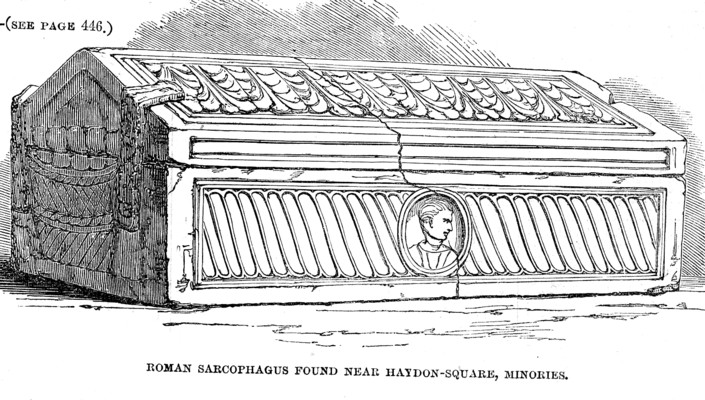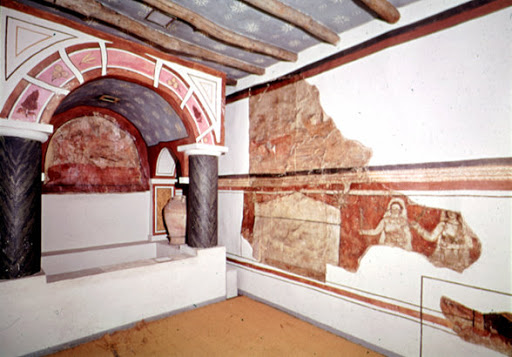
 |
Freethought & Rationalism ArchiveThe archives are read only. |
|
|||||||
| View Poll Results: Has mountainman's theory been falsified by the Dura evidence? | |||
| Yes |
|
34 | 57.63% |
| No |
|
9 | 15.25% |
| Don't know/don't care/don't understand/want another option |
|
16 | 27.12% |
| Voters: 59. You may not vote on this poll | |||
|
|
Thread Tools | Search this Thread |
|
|
#401 | ||
|
Contributor
Join Date: Mar 2004
Location: Dallas, TX
Posts: 11,525
|
Quote:
Hmmm. I wonder where the stone rolled in front of the entrance went on these tombs. Quote:
...hell, maybe it's the ark of the covenant. |
||
|
|
|
|
#402 | ||||||
|
Contributor
Join Date: Mar 2006
Location: Falls Creek, Oz.
Posts: 11,192
|
Quote:
And that the non canonical corpus was then authored, after the canon was first circulated by COnstantine c.324 CE, as a polemic reaction by the greek academics to Constantine. Quote:
Dear Ben and S&H, My thesis follows the principle that the entir apochryphal NT corpus was authored largely between the years of 324 and 336 CE, perhaps much of it by one single author, perhaps multiple authors, but the greatest of possible suspect authors would be the greek academic logician and ascetic priest (perhaps of Apollo, perhaps of Asclepius), Arius of Alexandria. From Ben's site: Quote:
Quote:
Quote:
Thankyou for the paraphrasing bacht. Essentially correct. But let me firmly state that these people who wrote the NT apochrypha as satirical polemical reaction to the canon, were not simply "unemployed scribes from the pagan scriptoria that were closed by Constantine". These same people were the exclusive preservers of Pythagoras, Plato and the knowledge of Euclid, etc, etc, etc which literature Constantine wished to BURN. These same people were highly educated greek speaking priests of the networks of temples to Ascelpius and Apollo (etc) in the eastern empire and particulalry as Alexandria. They are now regared as neopythagoreans and neoplatonist philosophers. Constantine caused the "dark ages". Best wishes, Pete |
||||||
|
|
|
|
#403 |
|
Contributor
Join Date: Mar 2003
Location: London UK
Posts: 16,024
|
If we track some technologies against alleged religious timelines there are strange anomalies.
Archimedes works out calculus Ankylethera Mechanism Birth of Jesus Parthenon Constantine Hispatia This gives me the impression that the alleged coming of the son of god was not that important, and a belief that it is the central point in history may be a propaganda one. Thus the positioning of that point may also be a propaganda effort. |
|
|
|
|
#404 | |||
|
Contributor
Join Date: Mar 2002
Location: nowhere
Posts: 15,747
|
Quote:
Quote:
spin |
|||
|
|
|
|
#405 | |
|
Contributor
Join Date: Mar 2006
Location: Falls Creek, Oz.
Posts: 11,192
|
Quote:
Just to repeat this, the theory sees the new testament canonical literature being assembled by Constantine (via Eusebius) in the period 312 to 324 CE, and the new testament non canonical corpus being authored by greek speaking academics, neopythagorean and neoplatonic priests of the temple networks of Apollo and Asclepius, logicians, mathematicians, astronomers/astrologers, etc (eg: who was Sopater) during the period 324 to 336 CE (Possibly to the end of the 4th century). In particular the gospel of the hebrews is classified as "a heretical text". All the apochrypha were "heretical texts", sicne they we satires against the canon. Constantine was furious, and a a result the christians were incensed! They needed to get hold of these seditious writings! They had to locate these non canonical texts and destroy them. The texts had a price on their head. Constantine explicitly mentions that the texts of Arius of Alexandria are to be consigned to the fire. Anyone caught concealing the texts of Arius would receive the capital punishment (ie: beheading without delay). Arius of Alexandria is described as a Porphyrian by the Boss. Arius may have authored "The Gospel of the Hebrews" (for example) My thesis sees it as a satire, which also preserves unusual pagan wisdom. I hope this clarifies my position. Best wishes, Pete |
|
|
|
|
|
#406 | |||
|
Veteran Member
Join Date: May 2005
Location: Midwest
Posts: 4,787
|
Quote:
Quote:
Quote:
It certainly looks more like a sarcophagus, does it not? Ben.  
|
|||
|
|
|
|
#407 | |
|
Contributor
Join Date: Mar 2006
Location: Falls Creek, Oz.
Posts: 11,192
|
Quote:
The same may be said for the field of medicine. Notably at the beginning of the renaissance the bogus christian saints (Cosmas et Damian) who had been reverred since the fourth/fifth/sixth century (replacing Asclepius) were kicked out of the prime spot for the symbolism of the medical profession, and the emblem of the staff of Asclepius was reinstated. People in the renaissance woke up to the insubstantial claims of the christian propaganda in respect of medical knowledge. Here we are in 2008 working on the christian propaganda in respect of ancient historical knowledge. Best wishes, Pete |
|
|
|
|
|
#408 | |||
|
Contributor
Join Date: Mar 2002
Location: nowhere
Posts: 15,747
|
Quote:
spin |
|||
|
|
|
|
#409 | ||
|
Veteran Member
Join Date: May 2005
Location: Midwest
Posts: 4,787
|
Quote:
Quote:
|
||
|
|
|
|
#410 | ||
|
Contributor
Join Date: Mar 2002
Location: nowhere
Posts: 15,747
|
Quote:
spin |
||
|
|
| Thread Tools | Search this Thread |
|